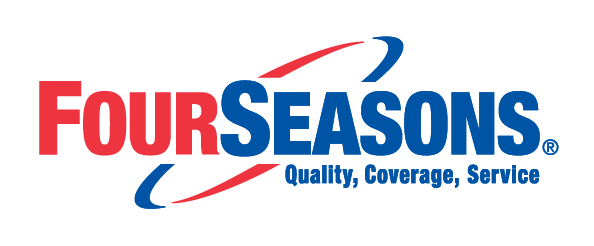Top 10 Questions
In response to requests from the field, we have created a list of the
Most Frequently Asked Tech Line Questions
We hope that this list will answer many of the questions commonly asked by installers and save them some time in the shop. Can't find what you're looking for? Contact our Technical Assistance Hotline at 1-866-502-0068. Don't forget to have your Preferred Customer Pin Number handy for shorter hold times.

Question 1
What is the type and amount of refrigerant and lubricant for my vehicle?
Answer: There are several reference points for this information. The Compressor/System Refrigerant and Lubrication Specs section for each make in the Four Seasons application catalog; the Tips and Techniques book by Four Seasons; or the Original Equipment Manufacturer underhood sticker or other OEM publications.
Question 2
I have installed one of your compressors, accumulators and orifice tubes but the compressor is noisy. What is the problem?
Answer: There are several concerns that can make a compressor noisy:
1. Excessive high side pressure due to:
- Poor airflow across the condenser resulting from:
- External restriction of condenser/radiator
- Bad fan clutch or radiator/condenser fan motor
- Internal restriction of the condenser and/or discharge line
- System refrigerant or oil overcharge
- Air in the system
- Blend refrigerants
2. Mounting brackets that are:
- Loose, warped, cracked or broken
- Incorrect torque or missing mounting bolts
- Contacting a switch port plug
3. Harmonic vibration (noise) transmitting through:
- Drive belt
- Noise will be heard at heaviest load on drive belt (compressor)
- Caused by other belt driven components (idler pulley, power steering pump, etc.)
- Mis-routed discharge or suction hoses
Question 3
Heater cores are beginning to leak shortly after installation. Are you having a problem with Heater Cores?
Answer: Heater core leaks and failures are usually a result of corrosion and/or erosion. This is a result of improper cleansing of the coolant system. Improper cleansing can result in electrolysis as well, which will perpetuate corrosion and erosion. When unlike metals are placed in the presence of a liquid that will carry electricity, electrolysis develops. Coolant that is contaminated and/or electrically charged will eat away at the thin skin of the aluminum, brass, or copper heater core. Corrosion and erosion can make a heater core leak in as little as a few days and repeated failures will occur until proper service is performed.
To repair, chemically neutralize and flush the coolant system as well as use the proper coolant. There are several "Cooling System Cleaners" that can accomplish the neutralization and cleansing required to properly service the cooling system. To determine the proper coolant refer to the OEM.
Reference: The article on Heater Core Failures in the heater core section of our Temperature Control Products Illustrated guide, or our Technical Service Bulletin's AB331, and AB350
Question 4
How do I know which sealing washer to use with this GM compressor?
Answer: In each Four Seasons GM compressor box that requires sealing washers, a chart is provided to determine which washer should be used.
Question 5
The fan clutch I installed does not engage/disengage properly. What is going on?
Answer: During a cold start a thermal fan clutch will engage for a short amount of time and then disengage. The fan clutch will not reengage until the air temperature coming through the radiator exceeds 180 degrees Fahrenheit. If cooling problems exist it could be the internal condition of the radiator, dirty or bent fins on the radiator or water pump problems.
Question 6
Why doesn't Four Seasons offer AC System Sealer?
Answer: For years now, the Mobile HVAC Aftermarket has been inundated with a multitude of products claiming to be a cure-all or quick fix. They have been around in many forms for numerous years and have been used by the installer base with mixed results. One such product on the market that has been receiving a lot of attention of late is "System Sealers." "Systems Sealers" are intended to seal A/C refrigeration system leaks without incurring the cost associated with proper service.
TCD offers products and/or solutions that are intended to meet or exceed the demand of the market. Our mission is to provide our customers with a service level that is second to none and in doing so we perform extensive research and testing on those products offered in our line. In researching sealing products, we have found that there is a considerable objection from the OE system and equipment manufacturers on the use of "System Sealers." In fact, many of these manufacturers are voiding customer's warranties should such products be found within their systems. TCD's policy regarding the use of these products is that we DO NOT endorse its use and will deny all claims made against defective products returned for credit that are found to have been exposed to or
suspected of containing said sealers.
Our recommendation has always been that a leaking component needs to be replaced! We are continuing our evaluation process on the effects that "System Sealers" have on components within the A/C system. In addition, we are working closely with the manufacturers of these sealers as well as other component manufactures and industry related associations on their testing and evaluation processes in which to substantiate or refute its claims.
Question 7
During a retrofit, how much refrigerant charge do I use?
Answer: We suggest that you begin by charging the system with 90% of the original equipment's refrigerant capacity. Once this has been done, begin adjusting the charge utilizing temperature differential testing. The temperature differential testing procedures can be found in our Tips and Techniques book.
Question 8
I have a Sanden part number, can you interchange it?
Answer: Sanden model number interchanges can be found in the Temp Control Products Illustrated Guide Catalog right before the Sanden compressor pictures. We also include a chart that helps in identifying rear head types. The information in the catalog was up to date at the time of printing but we continually update our electronic information here so feel free to call for information that can not be found.
Question 9
What is the difference between plate and fin and serpentine evaporators?
Answer: Serpentine evaporators have one flat continuous tube with many passes. They curve back and forth like a snake the entire length of the evaporator. Plate and fin evaporators have numerous plates that are separated by fins. The plates run the entire width of the evaporator and will be grouped in 3, 4 or 5 plates and are internally separated by baffles. The plates will have several small passes much like the serpentine. Plate and fin evaporators are the most efficient core offered today.
Question 10
I have a late model Chrysler with manual temp controls and the A/C control lights are flashing. What does this mean?
Answer: From about 1993 on, most Chrysler vehicles use flashing A/C control lights to indicate potential system problems. This could be caused by something as simple as replacing a battery or may indicate other electrical or A/C system problems. A DRB (Dashboard Readout and Adjustment procedure) is available. This procedure is available through Mitchell on Demand or from the OEM. If neither of these are available to you we can fax, e-mail or go over the procedure on our Technical Services hotline.
